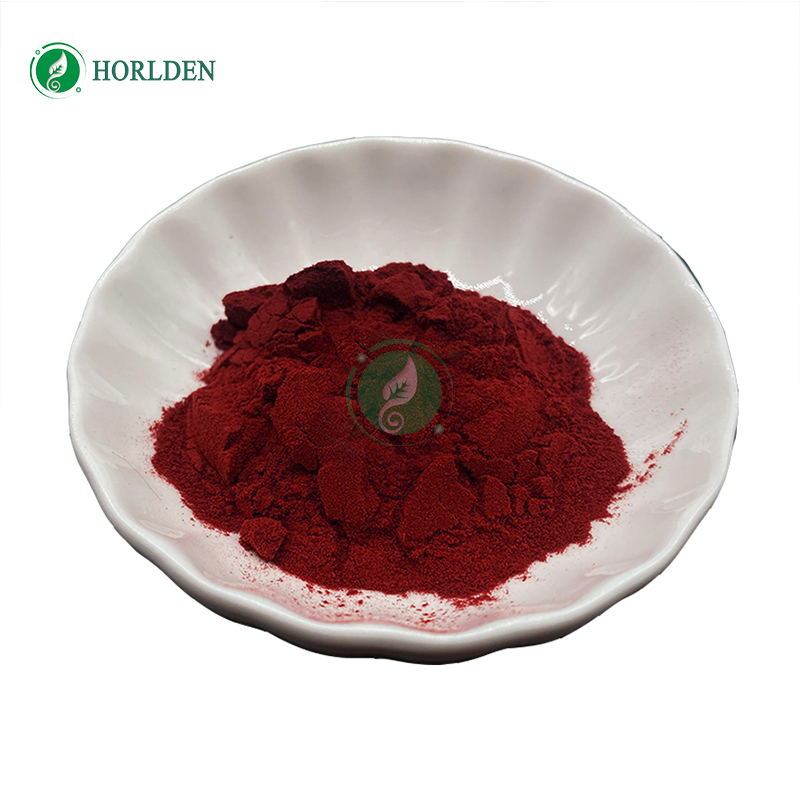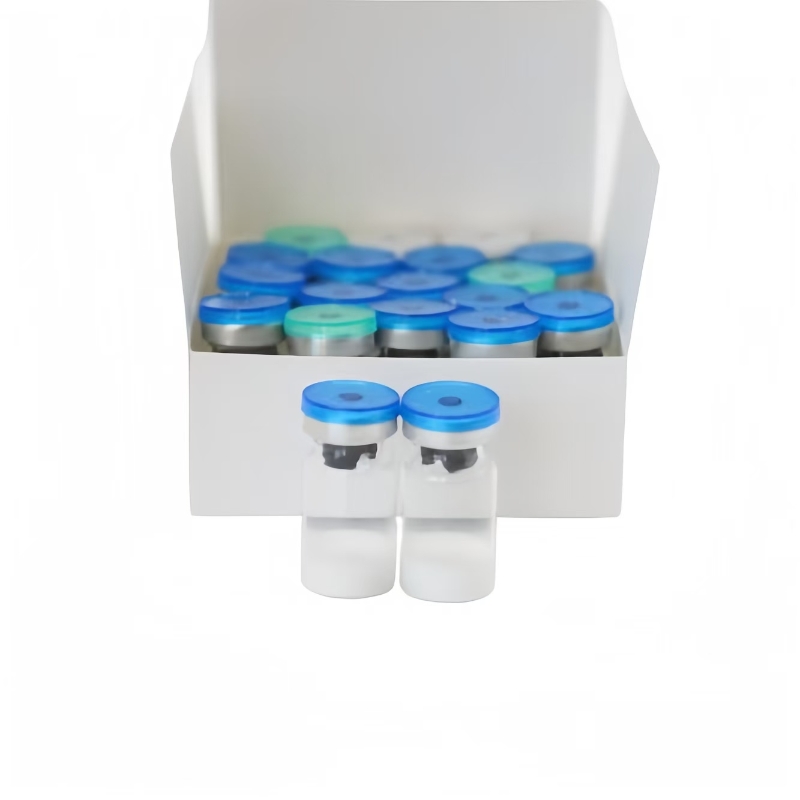Inventory | 10 antibody drugs that will receive regulatory approval in the U.S. and Europe in 2020
-
Last Update: 2020-01-03
-
Source: Internet
-
Author: User
Search more information of high quality chemicals, good prices and reliable suppliers, visit
www.echemi.com
Compiler: the anti body society published a report at the end of November 2019 to analyze the development of new drugs in the field of antibody According to the report, in 2020, there will be 12 antibody drugs in the United States or the European Union to obtain regulatory approval However, two drugs in the report have been approved by the US FDA in the middle and late December 2019, including: padcev (enfortumab Vedotin), a first antibody drug conjugate (ADC), was developed by Seattle genetics company in cooperation with Astaire It was approved on December 18, three months earlier than the target date of PDUFA It is used to treat a PD-1 / L1 inhibitor that has been previously treated, and a platinum containing drug in new adjuvant / adjuvant therapy or in the treatment of locally advanced or metastatic diseases Treatment of locally advanced or metastatic urothelial carcinoma (UC); enhertu (trastuzumab) Dextecan), which is also an ADC, was developed by AstraZeneca and the first three companies It was approved on December 20, much earlier than the target date of PDUFA 2020q2 It is used to treat adult patients with HER2 positive transitional breast cancer who have received two or more kinds of anti HER2 drugs in metastatic diseases The following is a brief review of the remaining 10 antibody drugs in the report, and updated and supplemented according to the website information of each company Among them, the first 7 are for non cancer indications, and the last 3 are for cancer indications 1 Eptinezumab is a humanized IgG1 monoclonal antibody, targeting to combine with calcitonin related gene peptide (CGRP), developed for migraine prevention Migraine is a common chronic neurovascular disease, characterized by recurrent severe headache, mostly laterally CGRP is a kind of neuropeptide, which has been proved to be released during migraine attack CGRP plays an important role in the pathophysiology of migraine and is a hot target of migraine drug development So far, three McAb migraine prophylactic therapies targeting CGRP and its receptor have been launched, which are Amgen, aimovig (targeting CGRP receptor), ajovy (targeting CGRP) and emgality (targeting CGRP) In terms of medication, aimovig and emgality are injected subcutaneously once a month, ajovy can be injected subcutaneously once a month or once every three months It's worth mentioning that albrelvy was approved by the US FDA last month for the acute treatment of adult migraine (with or without aura), becoming the first and only oral CGRP receptor antagonist approved for the treatment of migraine attack Eptinezumab was developed by alder biopharmaceuticals, which Lingbei acquired in September 2019 for us $1.95 billion The drug is administered by intravenous infusion once every 3 months, with rapid and complete bioavailability, high specificity and strong binding to the inhibition of CGRP, showing differential clinical characteristics in clinical research, including 100% response rate in some patients Currently, the drug is under review by the FDA, and the PDUFA target date is February 21, 2020 If approved, eptinezumab will be the first prophylactic drug for migraine given intravenously once a quarter 2 Teprotumab is an all human IgG1 monoclonal antibody targeting insulin-like growth factor-1 receptor (IGF-1R), which is developed for the treatment of moderate to severe thyroid ophthalmopathy (TED) Ted is a progressive and aging autoimmune disease It is caused by the activation of igf-1r-mediated signal complex on orbital cells by autoantigen, which leads to a series of negative effects and long-term, irreversible damage, including exophthalmos, strabismus, diplopia and even blindness The drug was developed by horizon Pharma, and the results of the confirmatory phase III opt IC study published in March 2019 showed that the primary and all secondary end points were achieved: compared with the placebo group, the patients in the teprotumumab treatment group had significantly improved exophthalmos (primary end point, P < 0.001), decreased diplopia, reduced clinical activity score, and improved quality of life Data from the phase II study showed that teprotumab treatment resulted in clinically significant and highly statistically significant reductions in exophthalmos and active Ted symptoms (pain, swelling, redness, inflammation) At present, the drug is under the priority review of FDA, and PDUFA target date is March 8, 2020 Previously, FDA has awarded the breakthrough drug qualification, orphan drug qualification and fast track qualification of teprotumumab for treating active Ted Last month, FDA's dermatology and ophthalmic drug advisory committee (dodac) unanimously approved teprotumumab's treatment of active ted with potential benefits greater than risks If approved by the FDA, the drug will be the first to treat active Ted 3 Inebilizumab is a humanized monoclonal antibody targeting to CD19, which has been developed for the spectrum disorder of neuromyelitis optica (nmosd) The disease is characterized by relapses, each of which leads to progressive accumulation of disability, including blindness and paralysis, and sometimes even premature death About 80% of nmosd patients have AQP4 autoantibodies These autoantibodies are believed to be produced by plasma mother cells and plasma cells They are mainly combined with astrocytes in CNS, causing attacks and damaging optic nerve, spinal cord and brain Developed by viela bio, the drug has a high affinity for CD19, a protein widely expressed in B cells, including antibody secreting plasma mother cells and some plasma cells When inebilizumab binds to CD19, these cells can be rapidly depleted from the circulatory system Key n-momentum study data showed that in the aqp4-igg4 seropositive patients, compared with placebo, the risk of an nmosd attack in inebilizumab was significantly reduced by 77% (primary endpoint, P < 0.0001), and in the total treatment group (including the aqp4-igg4 seronegative patients), compared with placebo, the risk of an nmosd attack in inebilizumab was reduced by 73% At present, the drug is under the review of FDA In the United States and the European Union, the drug has been granted orphan drug qualification to treat nmosd, and also granted breakthrough drug qualification to treat nmosd in the United States In May 2019, hausen pharmaceutical and viela bio reached a strategic cooperation to introduce inebilizumab into China for development and treatment of nmosd and other potential inflammatory / autoimmune and hematological malignancy indications It is worth mentioning that in June and August 2019, alexion's complement C5 inhibitor soliris obtained regulatory approval from the United States and Europe, becoming the first drug to treat nmosd, which is applicable to adult patients with AQP4 antibody positive 4 Satralizumab is a humanized monoclonal antibody against interleukin-6 receptor (IL-6R), which has been developed for the treatment of nmosd Nmosd patients will experience unpredictable severe recurrence, which directly leads to cumulative and permanent neurological damage IL-6, a cytokine, is believed to play a key role in the inflammation of nmosd, triggering the inflammatory cascade, leading to injury and disability The drug, developed by Roche, is currently under review by the US FDA and accelerated evaluation by the EU EMA In the United States and the European Union, the drug has been awarded orphan drug qualification for treatment of nmosd, and also awarded breakthrough drug qualification for treatment of nmosd in the United States Data from two global phase III clinical studies (sakurastar, sakurasky) confirmed the efficacy and safety of satralizumab as a single drug therapy and combined therapy with baseline immunosuppressant respectively: (1) sakurastar study showed that in the whole study population, compared with placebo, satralizumab single drug therapy significantly reduced the risk of recurrence by 55%, and in aqp4-igg4 serological positive The risk of relapse was reduced by 74% in sex patients; (2) sakurasky study showed that in the whole study population, compared with placebo + baseline immunosuppressant, the risk of relapse was reduced by 62% in satralizumab + immunosuppressant treatment and 79% in aqp4-igg4 seropositive patients In the United States and the European Union, soliris is the only drug approved for the treatment of nmosd The drug is administered intravenously, once every two weeks Satralizumab is administered by subcutaneous injection once every four weeks If it is approved, it will be a more comprehensive treatment option for patients and nurses However, alexion company is also developing soliris upgraded product ultomiris (intravenous injection, once every 8 weeks) and subcutaneous injection type ultomiris It can be predicted that there will be a fierce competition in the field of nmosd in 2020 5 Leonlimab (pro140) is a humanized IgG4 monoclonal antibody, targeting to block chemokine receptor 5 (CCR5), which is a cell receptor and plays various roles in HIV infection, tumor metastasis and other immune-mediated diseases (including NASH) In the treatment of HIV infection, the drug belongs to a new class of therapies called virus entry inhibitors, which can mask CCR5 and protect these cells from HIV infection by blocking the entry of major R5 subtypes into healthy T cells At the same time, leonlimab does not seem to interfere with the normal function of CCR5 in mediating immune response Data from nine completed clinical studies showed that the drug significantly reduced or controlled HIV load in each study A phase IIB study showed that the single drug treatment can prevent the escape of HIV virus, and the virus inhibition time of some patients receiving treatment is more than 4 years In the United States, the FDA has awarded leonlimab the fast track qualification for HIV infection treatment The drug, developed by cytodyn, has been successfully combined with standard antiretroviral therapy for critical phase III studies in HIV infected patients, and is rolling submission of biologicals licensing application (BLA) for combination therapy to the US FDA According to the latest updated information, the BLA has completed one-third of the submission The company is also conducting another phase III study to evaluate leonlimab as a weekly monotherapy for people living with HIV In addition to HIV, leonlimab is also being developed for a variety of cancers (including metastatic triple negative breast cancer [mtnbc]) and immune diseases (including acute graft-versus-host disease [aGVHD]) Previously, leonlimab was awarded the fast channel qualification of treating mtnbc and orphan drug qualification of treating aGVHD by FDA 6 Narsoplimab is an all human IgG4 monoclonal antibody It was developed to treat thrombotic microangiopathy (hsct-tma) associated with hematopoietic stem cell transplantation with mannose binding lectin associated serine Proteinase-2 (masp-2) as the target Masp-2 is the effector enzyme of complement system lectin pathway The lectin pathway is mainly activated by tissue damage or microbial infection Importantly, unlike other complement targeted drugs on the market or under development, the inhibitory effect of narsoprimab on masp-2 does not interfere with the classical complement pathway, which is a key component of the immune response to acquired infection The function of narsoprimab is to prevent complement mediated inflammation and endothelial damage without affecting the function of other innate immune pathways Developed by Omeros, the drug has been awarded the breakthrough drug qualification for treating high-risk hsct-tma patients in the United States, the orphan drug qualification for preventing complement mediated thromboembolism (TMA) and hsct-tma treatment, and the orphan drug qualification for treating hematopoietic stem cell transplantation (HSCT) in the European Union Currently, narsoplimab is also in phase III
This article is an English version of an article which is originally in the Chinese language on echemi.com and is provided for information purposes only.
This website makes no representation or warranty of any kind, either expressed or implied, as to the accuracy, completeness ownership or reliability of
the article or any translations thereof. If you have any concerns or complaints relating to the article, please send an email, providing a detailed
description of the concern or complaint, to
service@echemi.com. A staff member will contact you within 5 working days. Once verified, infringing content
will be removed immediately.







